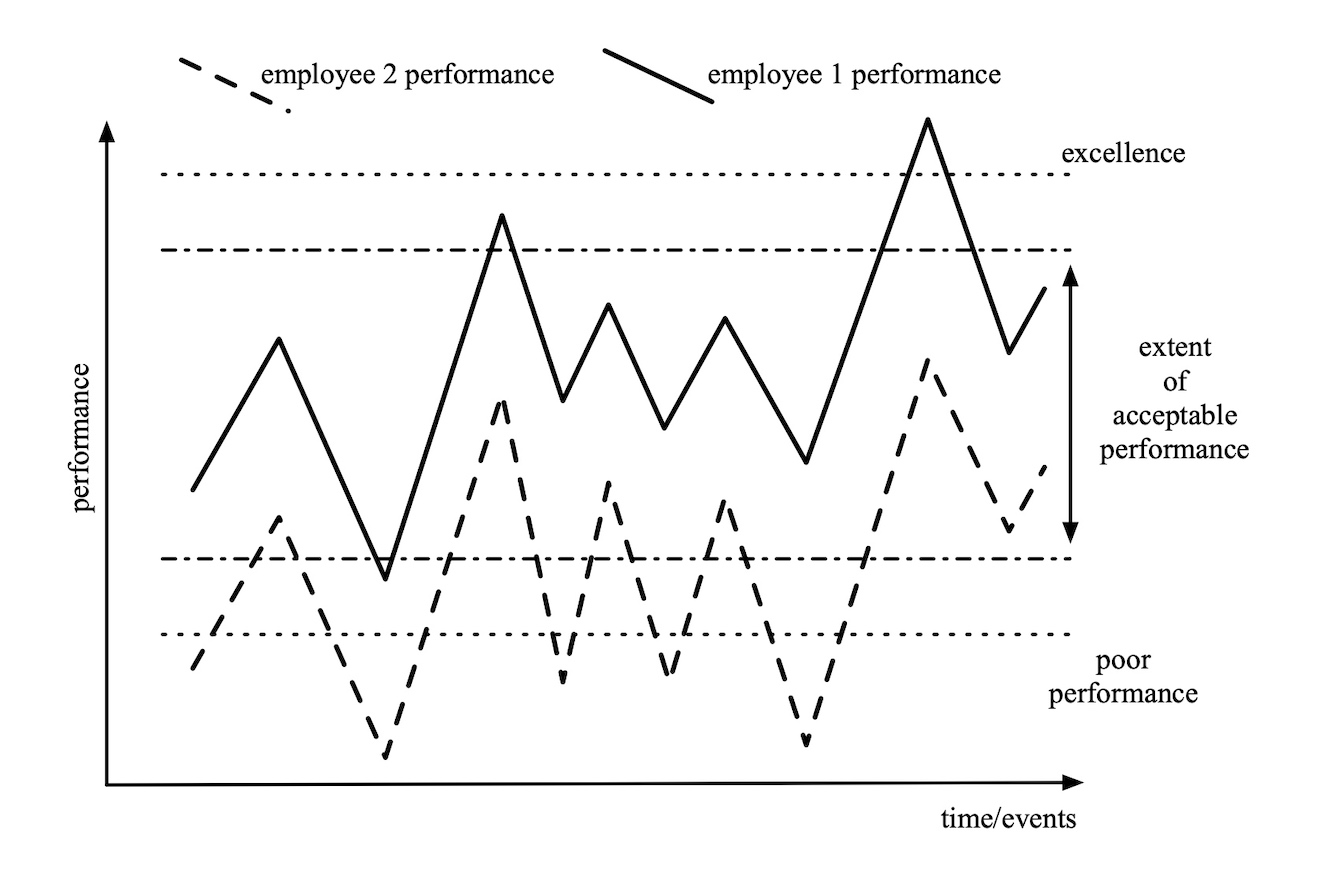How should I make use of HR data?
How should I make use of HR data?
Written by John Berry on 30th August 2019.0
4 min read
This blog follows on from an earlier blog discussing, “What HR data should I gather?”
Popularly, there are three centres of management interest.
Firstly, managers are keen to control anything that heightens costs over norms that they have established or that benchmarking with competitors suggests. Managers prepare budgets based on assumptions and trends from previous periods. Anything that changes for the worse degrades key metrics like profit. This explains the focus on things like absence, discipline, accidents and reduced quality.
Simply, each of the above examples causes direct increase in costs or reduction in efficiency, hitting the bottom line. Data is needed to control each.
 The basic idea is shown in the adjacent diagram. The diagram is indicative because it shows different personal performance, but mostly HR data is measured in groups, departments and firms. Here performance is measured and varies with time. If it slips outside the ‘extent of acceptable performance’, the manager must act to recover the situation. But if he or she is not aware of the slippage, there’s no reason to act, and the outcome is felt in a higher-level metric like profit. By then, the damage has been done.
The basic idea is shown in the adjacent diagram. The diagram is indicative because it shows different personal performance, but mostly HR data is measured in groups, departments and firms. Here performance is measured and varies with time. If it slips outside the ‘extent of acceptable performance’, the manager must act to recover the situation. But if he or she is not aware of the slippage, there’s no reason to act, and the outcome is felt in a higher-level metric like profit. By then, the damage has been done.
Secondly, managers are interested in anything that affects productivity such as competence, behaviour and the exploitation of technology.
These metrics are low-level. Competence is normally seen first in higher level metrics like quality. Poor competence is one variable that causes poor quality. But competence can itself be assessed by observation, perhaps by a subject-matter expert. The subject matter expert can easily assess competence in employee and overall group, department or firm.
As with high-level metrics like absence, competence, behaviour and use of technology can be measured and correction made through management intervention.
Thirdly, managers often focus on variables that reduce competitive advantage through low staff motivation. This covers variables like commitment, engagement and leadership. And here, we are drilling down to the inner workings of the firm.
Commitment, engagement and leadership are esoteric, bandied around willy-nilly and very badly understood by most managers.
Data gathering of such low-level metrics is inherently flawed. High-level data like absence is easily gathered using hard data. Low-level variables like commitment are so often captured by self-report. Great care is needed in the design of data gathering tools in this case.
Employees and managers are biased. And hence asking them to complete something as simple as a questionnaire is not a benign act. They will be thinking about what’s in it for them. They’ll consider any repercussions – because managers will easily know who said what in a survey in a small firm.
As an example, management in a small Sussex firm rejoiced when their 15-man workforce returned a 97% score when asked to compete a Gallup Q12 engagement survey. They perceived that 97% were highly engaged across all elements of engagement. But this was likely more a reflection of the degree of suspicion felt by staff about management rather than any positive feeling of employee engagement – the higher the suspicion, and the higher the perceived threat to their jobs, the higher the reported engagement. Was this what management expected and wanted?
There are many factors that reduce the validity of data – and that’s before managers start to analyse the results, draw conclusions and determine what management action is needed.
It’s popular to survey staff – even in small firms. It’s popular to harvest data from payroll or time booking. For data to be useful, it must enable valid conclusions to be drawn.
The reports produced from the data must provide insight and have meaning. This means that context is everything, and context comes from strategy and the competitive environment and is fuelled by the profit motive. In not-for-profits, context comes from funding and the desire to more with the resources available.
The gathering of HR and other personnel-oriented data is done for a reason. That reason must be steeped in what the firm hopes to achieve – in its strategy – and not in what’s popular. After all, good managers sense their staff. Data gathering and reporting should be done in pursuit of unknows and deep insight, not what managers know already.
And finally, managers must learn about the variables and the conclusions that they might enable. HR data gathering and analysis is not simple.